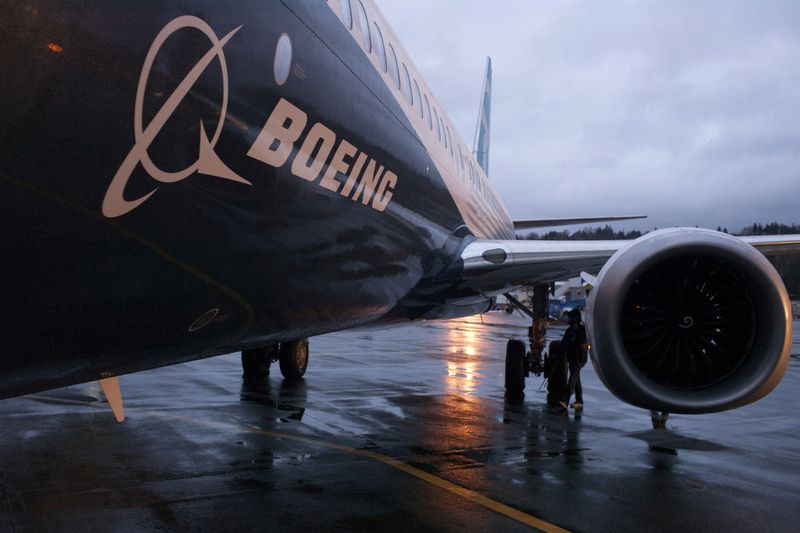By David Shepardson
WASHINGTON (Reuters) – The National Transportation Safety Board on Thursday issued urgent safety recommendations about the potential for a jammed rudder control system on some Boeing (NYSE:) 737 airplanes after a February incident involving a United Airlines flight.
The NTSB is investigating an incident in which the rudder pedals on a United Boeing 737 MAX 8 were “stuck” in the neutral position during a landing at Newark. There were no injuries to the 161 passengers and crew.
United said the rudder control parts at issue were in use in only nine of its 737 aircraft originally built for other airlines. United said on Thursday the components were all removed earlier this year.
The Federal Aviation Administration said it has been monitoring this situation closely and on Friday “will convene a corrective action review board based upon the NTSB’s interim recommendations and determine next steps.”
The NTSB said there are no 737s in the United States that are operating with the affected actuators, which were installed in some 737 MAX and prior-generation 737 NG planes that included an optional landing system. United had previously been the only U.S. operator with the components in use, the FAA said.
The NTSB on Thursday recommended Boeing notify flight crews the rudder control system can jam due to moisture that has accumulated inside the actuators and frozen and for Boeing to “determine appropriate flight crew responses besides applying maximum pedal force” for such situations in flight or during landing.
It also recommended the FAA determine if some actuators produced by Collins Aerospace, a unit of RTX, should be removed from airplanes and to halt use of the planes until replacement units are installed. It also wants the FAA to notify international aviation regulators if they decide the components should be removed.
Collins Aerospace determined a bearing was incorrectly assembled during production of the actuators and said more than 353 actuators delivered since February 2017 to Boeing were affected by this condition, the NTSB said.
Boeing said on Thursday it was reviewing the NTSB recommendations and would ensure flight crews have appropriate guidance.

The planemaker said in August it informed “affected 737 operators of a potential condition with the rudder rollout guidance actuator, which is part of an optional autoland system. The autoland system includes layers of redundancy and we are working with our supplier to develop additional guidance to address the potential condition.”
RTX said it continued “to work closely with the NTSB and Boeing on this investigation. We are supporting Boeing and operators to mitigate operational impacts.”


